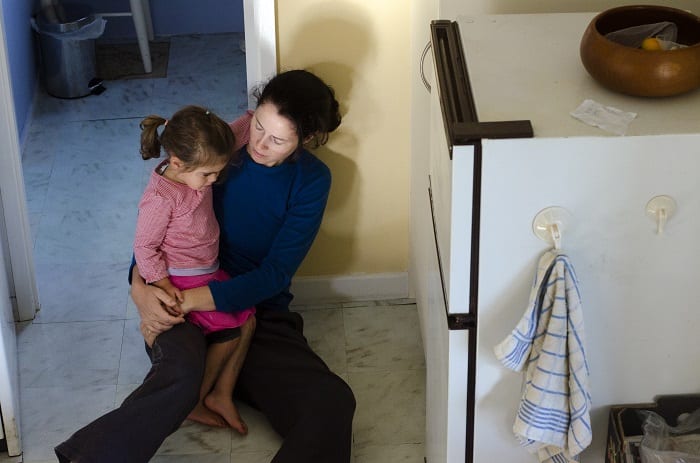Domestic Violence
- 1 in 3 women and 1 in 4 men have been victims of physical violence from an intimate partner in her or his lifetime.
- 1 in 4 women and 1 in 7 men have been in victims of severe physical violence from an intimate partner in her or his lifetime.
- In the United States a woman is beaten every 9 seconds.
- Each year, intimate partner violence results in an estimated 1,200 deaths and 2 million injuries among women and nearly 600,000 injuries among men.
- Domestic violence is the leading cause of injury to women ages 15-44 in the United States-more than car accidents, muggings, and rapes combined.
- Almost one-third of female homicide victims that are reported in police records are killed by an intimate partner.
- 1/3 of teens are in a violent dating relationship.


- In 2016, there were 196,564 incidents of family violence in Texas.
- 146 Texas women were killed by their intimate partner in 2016.
- 40% of women killed in 2016 were in the process of leaving their relationship or had made attempts to leave.
- 77% of the victims in 2016 were killed in their homes.
- On average, a man killed his wife/girlfriend every 2.5 days.
- More than 226,000 children and 104,000 adults become victims of sexual assault every year in Texas.
- In 2016, there were 9,798 reported family violence incidents in Williamson and Travis counties.
- In 2016, 581 Texas law officers were assaulted while responding to family violence calls-nearly 3 times higher than 2015.
- According to a 2002 study from the Texas Council on Family Violence, 74% of all Texans have either experienced family violence themselves or have a family member of friend who has experienced family violence.
*2016 is most recent data.
- Boys who witness domestic violence are twice as likely to abuse their own partners and children as adults.
- 50% of girls who grow up in an abusive home will go on to be victims of abuse themselves.
- Domestic violence is the leading predictor of child abuse – 30% to 60% of perpetrators of intimate partner violence also abuse children in the household.
- Witnessing violence between one’s parents or caretakers is the strongest risk factor of transmitting violent behavior from one generation to the next.


- Family violence costs the nation from $5 to $10 billion annually in medical expense, police and court costs, shelters and foster care, sick leave, absenteeism, and non-productivity.
- The annual cost of lost productivity due to domestic violence is estimated as $727.8 million, with more than 7.9 million paid workdays lost each year.
- Every year domestic violence results in almost 100,000 days of hospitalization, almost 30,000 emergency room visits, and almost 40,000 visits to a physician,according to WomanKind Inc.
Types of Domestic Abuse
Physical Abuse
Physical abuse is any intentional and unwanted bodily contact with you. Sometimes abusive behavior does not cause pain or even leave a bruise, but it’s still unhealthy.
Examples of physical abuse include:
- Scratching, punching, biting, strangling or kicking.
- Pushing or pulling you.
- Grabbing your clothing.
- Using a gun, knife, box cutter, bat, mace or other weapon.
- Grabbing your face to make you look at them.
- Grabbing you to prevent you from leaving or to force you to go somewhere.
- Throwing something at you such as a phone, dishes or shoes.
- Pulling your hair.
Escaping Physical Abuse
Start by learning that you are not alone. 1 in 3 women have experienced domestic violence.
- Realize this behavior is wrong.
- Talk to an adult, friend or family member that you trust.
- Contact Hope Alliance to help you create a safety plan for leaving.
- Do not accept or make excuses for your partner’s abusive behavior.
- Remember that physical abuse is never your fault.
*Information from National Domestic Hotline*
Emotional Abuse
Emotional abuse includes non-physical behaviors such as threats, insults, constant monitoring or “checking in,” excessive texting, humiliation, intimidation, isolation or stalking.
There are many behaviors that qualify as emotional or verbal abuse, including:
- Calling you names and putting you down.
- Yelling and screaming at you.
- Intentionally embarrassing you in public.
- Preventing you from seeing or talking with friends and family.
- Telling you what to do and wear.
- Damaging your property when they’re angry (throwing objects, punching walls, kicking doors, etc.)
- Using cell phones to control, intimidate or humiliate you.
- Blaming your actions for their abusive or unhealthy behavior.
- Accusing you of cheating and often being jealous of your outside relationships.
- Threatening to commit suicide to keep you from breaking up with them.
- Threatening to harm you, your pet or people you care about.
- Threatening to expose your secrets such as your sexual orientation or immigration status.
- Starting rumors about you.
- Threatening to have your children taken away.
Is Emotional Abuse Really Abuse?
A relationship can be unhealthy or abusive even without physical violence. Verbal abuse may not cause physical damage, but it does cause emotional pain and scarring. It can also lead to physical violence if the relationship continues on an unhealthy path.
Sometimes verbal abuse is so bad that you actually start believing what your partner says. You begin to think you’re stupid, ugly or worthless. You agree that nobody else would ever want to be in a relationship with you. Constantly being criticized and told you aren’t good enough causes you to lose confidence and lowers your self-esteem. As a result, you may start to blame yourself for your partner’s abusive behavior.
Remember: emotional abuse is never your fault. In fact, your partner may just be trying to control or manipulate you into staying in the relationship.
Financial Abuse
Financial abuse can be very subtle. It can include telling you what you can and cannot buy or requiring you to share control of your bank accounts.
Here are some examples of financially abusive behaviors:
- Giving you an allowance and closely watching what you buy.
- Placing your paycheck in their account and denying you access to it.
- Keeping you from seeing shared bank accounts or records.
- Forbidding you to work or limiting the hours you do.
- Preventing you from going to work by taking your car or keys.
- Getting you fired by harassing you, your employer or coworkers on the job.
- Hiding or stealing your student financial aid check or outside financial support.
- Using your social security number to obtain bad credit loans without your permission.
- Using your child’s social security number to claim an income tax refund without your permission.
- Maxing out your credit cards without your permission.
- Refusing to give you money, food, rent, medicine or clothing.
- Using funds from your children’s tuition or a joint savings account without your knowledge.
- Spending money on themselves but not allowing you to do the same.
- Giving you presents and/or paying for things like dinner and expecting you to somehow return the favor.
- Using their money to hold power over you because they know you are not in the same financial situation as they are.
I’m Experiencing Financial Abuse
If your partner does any of these things, you may be in an unhealthy or abusive relationship. Financial abuse is usually coupled with emotional or physical abuse.
If you are not in control over your finances, or if your partner has removed money from your bank account, it can seem very scary to leave an abusive relationship. Whether you decide to leave or stay, consider making a safety plan that includes setting aside funds in a secret location.
Stalking
You are being stalked when a person repeatedly watches, follows or harasses you, making you feel afraid or unsafe. A stalker can be someone you know, a past partner or a stranger. While the actual legal definition varies from one state to another, here are some examples of what stalkers may do:
- Show up at your home or place of work unannounced or uninvited.
- Send you unwanted text messages, letters, emails and voicemails.
- Leave unwanted items, gifts or flowers.
- Constantly call you and hang up.
- Use social networking sites and technology to track you.
- Spread rumors about you via the internet or word of mouth.
- Make unwanted phone calls to you.
- Call your employer or professor.
- Wait at places you hang out.
- Use other people as resources to investigate your life. For example, looking at your facebook page through someone else’s page or befriending your friends in order to get more information about you.
- Damage your home, car or other property.
What if I’m Being Stalked?
If you’re being stalked, you may be feeling stressed, vulnerable or anxious. You may also have trouble sleeping or concentrating at work or school. Remember, you are not alone. Every year in the United States, 3.4 million people are stalked and youth between the ages of 18-24 experience the highest rates. Most people assume that stalkers are strangers, but actually, three in four victims are harassed by someone they know.
If you are in immediate danger, call 911 and report everything that’s happened to the police. Get additional support by obtaining a protection order that makes it illegal for the stalker to come near.
Remember to save important evidence such as:
- Voicemails
- Videos
- Letters, photos and cards
- Unwanted items or gifts
- Social media friend requests
- Emails
You should also write down the times, places and dates all incidents occurred. Include the names and contact information of people who witnessed what happened.
Stalking is traumatic. You may experience nightmares, lose sleep, get depressed or feel like you’re no longer in control of your life. These reactions are normal. Talk to friends, family or call Hope Alliance to discuss your feelings.
Digital Abuse
Digital dating abuse is the use of technologies such as texting and social networking to bully, harass, stalk or intimidate a partner. Often this behavior is a form of verbal or emotional abuse perpetrated online.
In a healthy relationship, all communication is respectful whether in person, online or by phone. It is never okay for someone to do or say anything that makes you feel bad, lowers your self-esteem or manipulates you. You may be experiencing digital abuse if your partner:
- Tells you who you can or can’t be friends with on Facebook and other sites.
- Sends you negative, insulting or even threatening emails, Facebook messages, tweets, DMs or other messages online.
- Uses sites like Facebook, Twitter, foursquare and others to keep constant tabs on you.
- Puts you down in their status updates.
- Sends you unwanted, explicit pictures and/or demands you send some in return.
- Pressures you to send explicit video or sexts.
- Steals or insists on being given your passwords.
- Constantly texts you and makes you feel like you can’t be separated from your phone for fear that you will be punished.
- Looks through your phone frequently, checks up on your pictures, texts and outgoing calls.
- Tags you unkindly in pictures on Instagram, Tumblr, etc.
- Uses any kind of technology (such as spyware or GPS in a car or on a phone) to monitor you
You never deserve to be mistreated, online or off. Remember:
- It is okay to turn off your phone. You have the right to be alone and spend time with friends and family without your partner getting angry.
- You lose control of any electronic message once your partner receives it. They may forward it, so don’t send anything you fear could be seen by others.
- You do not have to share your passwords with anyone.
- Know your privacy settings. Social networks such as Facebook allow the user to control how their information is shared and who has access to it. These are often customizable and are found in the privacy section of the site. Remember, registering for some applications (apps) requires you to change your privacy settings.
- Be mindful when using check-ins like Facebook Places and foursquare. Letting an abusive partner know where you are could be dangerous. Also, always ask your friends if it’s okay for you to check them in. You never know if they are trying to keep their location secret.
Definitions of Domestic Violence
“Family Violence” is defined in the Texas Family Code (Section 71.004) as (1) An act by a member of a family or household against another member of the family or household that is intended to result in physical harm, bodily injury, assault or sexual assault or that is a threat that reasonably places the member in fear of imminent physical harm, bodily injury, assault or sexual assault, but does not included defensive measures to protect oneself; (2) Abuse by a member of a family or household toward a child of the family or household; or (3) Dating violence as defined by Section 71.0021.
“Dating Violence” is defined in the Texas Family Code (Section 71.0021) as (a) “Dating violence” means an act by an individual that is against another individual with whom that person has or has had a dating relationship and that is intended to result in physical harm, bodily injury, assault or sexual assault or that is a threat that reasonably places the individual in fear of imminent physical harm, bodily injury, assault or sexual assault, but does not include defensive measures to protect oneself. (b) For the purposes of this title, “dating relationship” means a relationship between individuals who have or have had a continuing relationship of a romantic or intimate nature. The existence of such a relationship shall be determined based on consideration of: 1. the length of the relationship; 2. the nature of the relationship; and 3. the frequency and type of interaction between the persons involved in the relationship. (c) A casual acquaintanceship or ordinary fraternization in a business or social context does not constitute a “dating relationship” under Subsection (b).
The Texas Council on Family Violence defines “battering” as a pattern of coercive control that one person exercises over another. Battering is a behavior that physically harms, arouses fear, prevents a woman from doing what she wishes or forces her to behave in ways she does not want. Battering includes the use of physical and sexual violence, threats and intimidation, emotional abuse, and economic deprivation.
National Expert on Family Violence, Barbara Hart, defines Domestic Violence as, “Domestic violence involves a continuum of behaviors ranging from degrading remarks to cruel jokes, economic exploitation, punches and kicks, false imprisonment, sexual abuse, suffocating actions, maiming assaults, and homicide. Unchecked, domestic violence usually increases in frequency and severity. Many victims suffer all forms of abuse. Verbal and emotional abuse may be subtler than physical harm, but this does not mean that it is less destructive to victims. Many have said that the emotional scars take much longer to heal than the broken bones.”



